The R600 chip is probably the most delayed chip in the history
of ATI. It was supposed to show its face in October / November time but too many
things went wrong.
The biggest problem of all was that the G80 was far better than
anyone could have expected and Nvidia had a secret weapon, Shaders clocked twice as fast
of the GPU speed.
R600 was a nice concept with 320 stream processors or Shader
units divided in four blocks and 512 Mbit memory interface. Unfortunately this
700 million transistor chip was way to hot and the performance was not that
great.
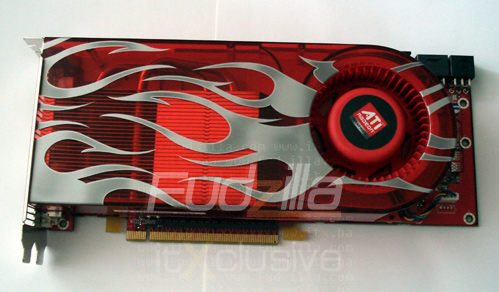
ATI was ready with its R600 generation in early March, but the
performance was so bad that the company decided to postpone the launch till it
gets a better driver. Well, they could not push it any further and ATI decided
to launch the Radeon HD 2900XT, a cheaper high end card, and to cover the R600
flaws with a Half life 2 episode two voucher.
We had a chance to take a look at two cards, an ATI reference
Radeon HD 2900XT and Power Color's Radeon HD 2900XT. As both cards were the same
we decided to post the Power Color stuff only as it is based on the same reference
design.
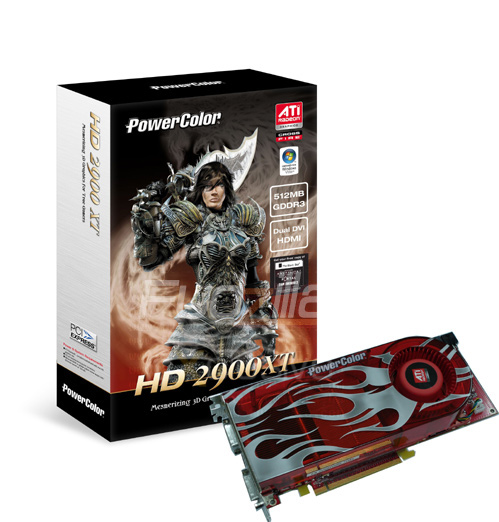
The card is clocked at 742/1650 MHz and
these are the final clocks of the reference design cards. You can read more about the cooler here,
but the story is simple. The card ends up very hot. My biggest problem with the cooler is that it tends to be quite noisy in 3D. In 2D mode the card works at 507 MHz core and it doesn't make much noise.
Well, we wont pay much attention to the temperature of the
card as the high end cards can get hot and even the 8800 GTX card ends up close
to 80 Celsius if not more on the power components. The r600XT GPU heats up, up
to acceptable 71 Celsius and it works stable.
The card comes with a voucher the same as we pictured a few
days ago here.
AMD's own user guide suggests a 750W PSU and you can read it
here but we tested and figured out that a single Radeon HD 2900XT works with a
quality 500W as well. However it won't work with every 500W PSU, especially not
with the cheap ones.
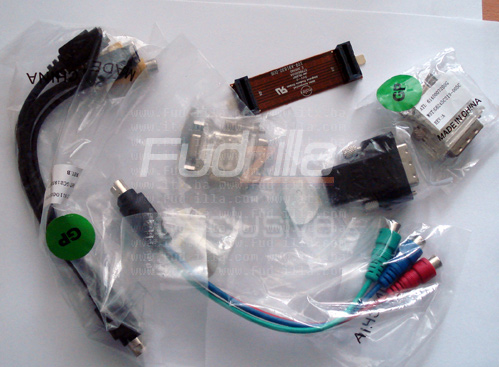
We won't go much into the architecture, as we wrote about it
before but it is important to mention that ATI chip has 64 Shader units and
they can deal with Vec5 scalar functions. ATI and a few developers claim that
R600 has a much better geometry Shader than Nvidia but this is a DirectX 10
feature only and there are no any DirectX 10 games to put this claim to the test.
One other interesting thing is the DVI to HDMI dongle that
should be able to take care of Audio but we didn’t had a chance to play with
this much.
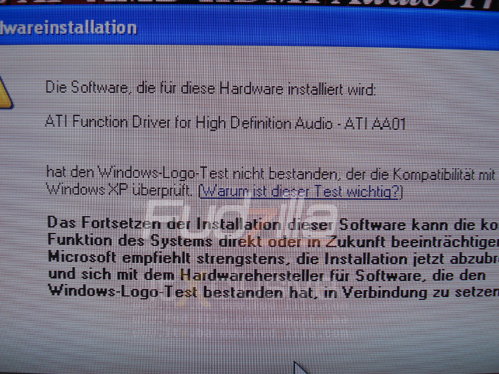
ATI has a few drives but the launch one is called 8.364, however we also learned that 8.374a and b were available to a few of reviewers. There
should be a 8.378 that can improve the performance for additional five percent
but this is yet to be seen.
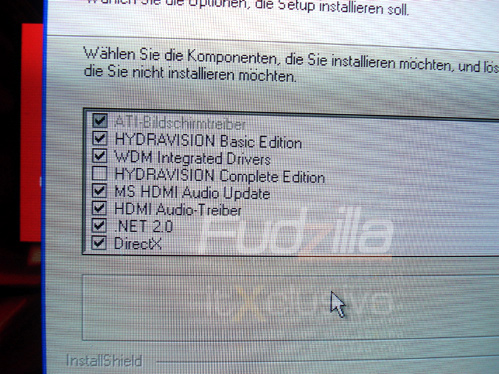
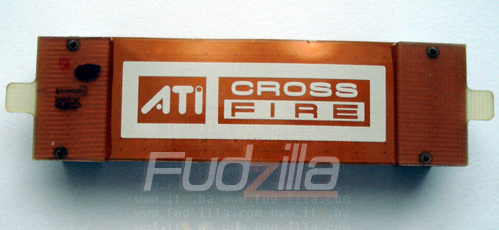
The card has two PCIe power connectors one 4x2 pin for
overdrive overclocking while the second one is the standard 3x2 pins. The card
will work with two 3x2 pin connectors, but the driver wont recognize the
overdrive overclocking option.
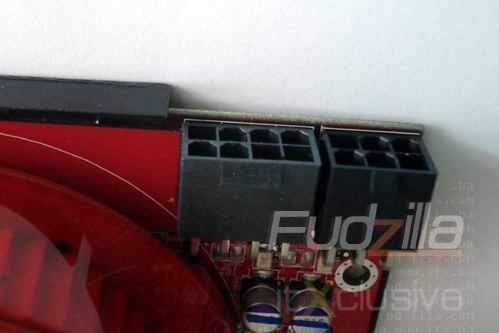
Finally the card has an internal Crossfire connector and it
looks identical to the ones we saw on RV570 based Radeon X1950 PRO cards.
The
package includes two DVI dongles, DVI to HDMI dongle, HDTV cable and Avivo
analogue cables.
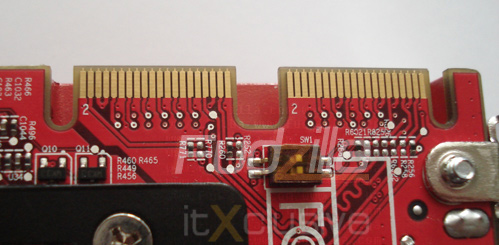
Let's not forget the Crossfire internal connector. The package also includes the Voucher for Half
Life 2 episode 2, team fortress 2 and portal games. You can also play Day of
Defeat source game when you buy this card and unfortunately this is the only
game that is actually out.
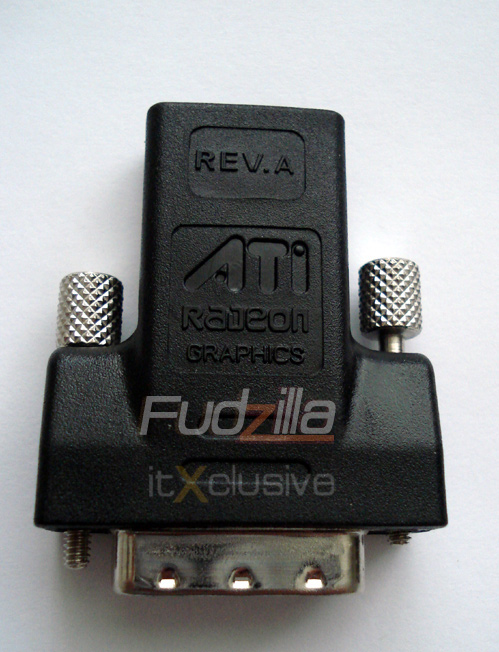
Test:
We used our usual test setup and compared the card with 8800
GTX and GTS 640 MB cards as these are the real competitors of the Radeon HD
2900XTX. In some scores we used an overclocked EVGA AC3 8800GTX 652/2000 MHz, so the
card that should be very close to Geforce 8800 Ultra speeds.
We will focus on the scores of Radeon HD 2900XT versus
Geforce 8800 GTS 640, but we will comment the other scores as well.
To make one thing clear at the beginning Radeon HD 2900XT almost never wins over Geforce 8800 GTX, not to
mention the overclocked 8800 GTX. It is not in the same legue but to be fair it is
a bit cheaper than these cards.
We used:
Intel Core 2 Duo 6800 Extreme edition
Nforce 680i EVGA board
Corsair Dominator TWIN2X1024-8500 at 5-5-5-15 at 1066 MHz
Seagate Barracuda 7200.9 400GB SATA NCQ hard drive
Akasa EVO AK 922 Blue Athlon 64/X2/FX cooler and Intel CPU's
Silverstone DA750W modular PSU
|
Composite Figures 3Dmark 03 |
3DMark 03 |
Game2 |
Game3 |
Game4 |
|
ATI HD 2900XT 742/1650 MHz |
37411 |
302.9 |
240.9 |
250.5 |
|
ATI X1950XTX 650/200 MHz |
22799 |
176.2 |
126.9 |
142.4 |
|
Leadtek WinFast PX8800GTS 640MB |
32253 |
269.1 |
202.4 |
190.1 |
|
EVGA AC3 8800GTX 626/2000 MHz |
42705 |
381.1 |
277.4 |
244.7 |
|
NVIDIA 8800GTX 575/1800 MHz |
39904 |
350.9 |
258.7 |
227.4 |
|
|
|
|
|
|
|
Composite Figures 3Dmark 03 |
Single Texturinng |
Multi Textur. |
Vertex Shader |
Pixel Shader 2.0 |
|
ATI HD 2900XT 742/1650 MHz |
7588.5 |
11346.4 |
203.7 |
372.4 |
|
ATI X1950XTX 650/200 MHz |
5346.5 |
10005.9 |
78.1 |
241.6 |
|
Leadtek WinFast PX8800GTS 640MB |
5098.1 |
11878.9 |
102.6 |
483.9 |
|
EVGA AC3 8800GTX 626/2000 MHz |
7453.4 |
19179.5 |
138.1 |
700.5 |
|
NVIDIA 8800GTX 575/1800 MHz |
6855.4 |
17652.4 |
127.7 |
643.9 |
|
Composite Figures 3Dmark 05 |
3DMark 05 |
Game1 |
Game2 |
Game3 |
|
ATI HD 2900XT 742/1650 MHz |
16794 |
64.1 |
50.9 |
93.9 |
|
ATI X1950XTX 650/200 MHz |
13152 |
59.3 |
35.8 |
68.5 |
|
Leadtek WinFast PX8800GTS 640MB |
15819 |
63.3 |
47.3 |
84.6 |
|
EVGA AC3 8800GTX 626/2000 MHz |
17554 |
63.7 |
49.6 |
109.5 |
|
NVIDIA 8800GTX 575/1800 MHz |
17147 |
63.7 |
49.7 |
102.0 |
|
|
|
|
|
|
|
Composite Figures 3Dmark 05 |
Single Texturinng |
Multi Textur. |
Pixel Shader |
VS/VS |
|
ATI HD 2900XT 742/1650 MHz |
7910.8 |
11759.2 |
511.6 |
285.1/193.0 |
|
ATI X1950XTX 650/200 MHz |
5890.6 |
9644.0 |
454.8 |
152.7/62.0 |
|
Leadtek WinFast PX8800GTS 640MB |
5149.7 |
11888.6 |
408.9 |
124.1/115.3 |
|
EVGA AC3 8800GTX 626/2000 MHz |
7514.8 |
19169.9 |
648.2 |
152.0/141.1 |
|
NVIDIA 8800GTX 575/1800 MHz |
6926.7 |
17610.4 |
Last modified on 15 May 2007
|

